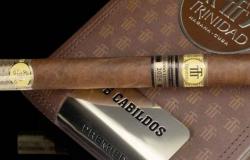She bought fabrics, joined the scraps as indicated by Manuel Belgrano, and added golden threads to the finish, a craft task that took at least five days and for which she needed the assistance of two neighbors. However, until 2012, tributes never reached María Catalina Echevarría de Vidal, the daughter of Basque immigrants who made the first Argentine flag.
The friendship that united Belgrano with Vicente Anastasio de Echevarría, brother of María Catalina and a man of active political participation at the time, allowed the creator of the flag to agree to stay in the Echevarría family home, in what was then Villa del Rosario. , where he was sent to contain the advance of the royalists.
Rosario Women’s Flag Day.jpg
The need to have a distinctive symbol for his army decided Belgrano to ask for women’s collaboration in making it. On February 20 he slipped the idea in a private talk. She agreed to take on the task immediately. “Since it was necessary to fly the flag and I didn’t have it, I ordered it to be made white and light blue according to the colors of the national cockade,” Belgrano explained to the Triumvirate, which disapproved of the decision.
Two hundred years after that feat, a plaque placed in the Juramento passage, meters from the National Monument to the Flag, became the first formal memory paid to Echevarría de Vidal in his hometown. Until now, there were no streets, squares or monuments in Rosario that mentioned her.
María Catalina Echevarría de Vidal woman flag 1.jpg
Echevarría de Vidal not only made the first Argentine flag but also attended the swearing-in ceremony, on the banks of the Paraná and in front of the Independencia and Libertad artillery batteries.
After being defeated in Vilcapugio in 1813, and while he regrouped his army in the town of Macha – today a territory of Bolivia -, Belgrano ordered the flag hidden. In 1885 it was found in the Titiri chapel. It currently remains in the “Casa de la Libertad” museum in Sucre. After an effort by socialist senator Rubén Giustiniani, the Government of Bolivia sent an authenticated replica that rests in the Flag Monument.
#Argentina






